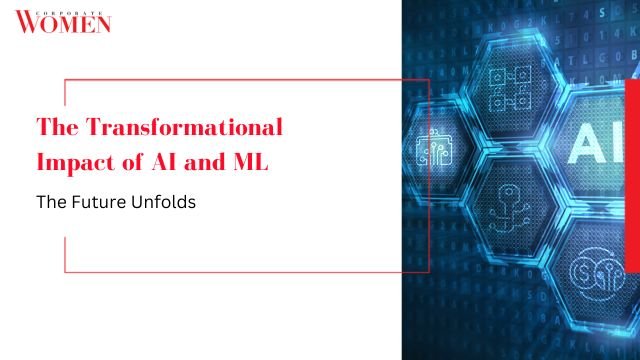Amplify Your Leadership Voice Worldwide
Join 7,000+ industry leaders sharing insights with millions of professionals globally
Join 7,000+ industry leaders sharing insights with millions of professionals globally

Artificial Intelligence (AI) and Machine Learning (ML) are not just buzzwords; they are shaping the future of technology. AI refers to the ability of a computer or machine to simulate human intelligence, while ML is a subset of AI that enables computers to learn from data without explicit programming.
The applications of AI and ML are vast and diverse, spanning multiple industries. In healthcare, these technologies are utilised to develop new drugs, diagnose diseases, and offer personalised care, leading to more effective treatments and improved patient outcomes. Financial institutions leverage AI and ML to detect fraudulent activities, manage risk, and make data-driven investment decisions, enhancing security and boosting financial performance.
In manufacturing, AI and ML optimise production processes, improve product quality, and reduce operational costs. Retail businesses harness these technologies to personalise recommendations, enhance customer service, and optimise inventory management, ultimately increasing customer satisfaction and loyalty. In transportation, AI and ML are driving the development of self-driving cars, optimising traffic flow, and enhancing safety on roads. Moreover, energy companies utilise AI and ML to develop renewable energy sources, improve energy efficiency, and manage demand, contributing to a more sustainable future. In agriculture, these technologies have empowered farmers to improve crop yields, optimise irrigation, and detect pests and diseases, ensuring food security and sustainable farming practices.
AI and ML have the potential to revolutionise numerous industries and significantly impact our daily lives. As these technologies continue to advance, we can expect even more innovative and disruptive applications to emerge, driving progress and transforming society.
While AI and ML are often used interchangeably, it is essential to understand their distinctions. AI encompasses a broader range of technologies that aim to simulate human intelligence. On the other hand, ML is a specific approach within the AI realm that enables computers to learn and improve from experience without being explicitly programmed for each task. In summary, all ML is AI, but not all AI is ML.
The integration of AI and ML offers various advantages that can positively impact businesses and individuals:
Automation: AI and ML enable the automation of repetitive and time-consuming tasks, liberating human resources to focus on creative and strategic work.
Improved Decision-Making: These technologies analyse vast amounts of data, uncovering hidden patterns and trends beyond human capability. This empowers businesses to make data-driven decisions, leading to improved outcomes and informed strategies.
Personalisation: AI and ML facilitate personalised experiences for customers and users by analysing their preferences and behaviours. This personalisation fosters customer loyalty and enhances overall user satisfaction.
Efficiency: Through the automation of processes and data analysis, AI and ML enhance operational efficiency, resulting in reduced costs and optimised performance.
As promising as AI and ML are, they come with specific challenges that need to be addressed:
Data Requirements: AI and ML algorithms rely heavily on vast and diverse datasets for training and learning. Businesses must have access to sufficient data to derive meaningful insights.
Bias: If trained on biased data, AI and ML algorithms may produce biased results, leading to unfair or inaccurate outcomes. Ensuring data diversity and representation is crucial to combat this challenge.
Interpretability: AI and ML decision-making processes can be complex and challenging to interpret. The ability to understand and explain these decisions is essential, especially in critical applications like healthcare and finance.
Security: AI and ML systems are susceptible to cyberattacks. Ensuring robust security measures are in place to safeguard data and systems is imperative to maintain trust and confidence in these technologies.
While AI and ML present unique challenges, they also offer the transformative potential to drive positive change in multiple domains. As organisations and individuals embrace these technologies responsibly, we can look forward to a future where AI and ML continue to improve our lives, make businesses more efficient and innovative, and contribute to a sustainable and interconnected global society. By navigating the challenges and capitalising on the opportunities, we can ensure that the future unfolds with the promise of progress and prosperity.
Join industry leaders who have shared their insights with millions of professionals globally.
Copyright © 2025 The Corporate Women. All Rights Reserved.